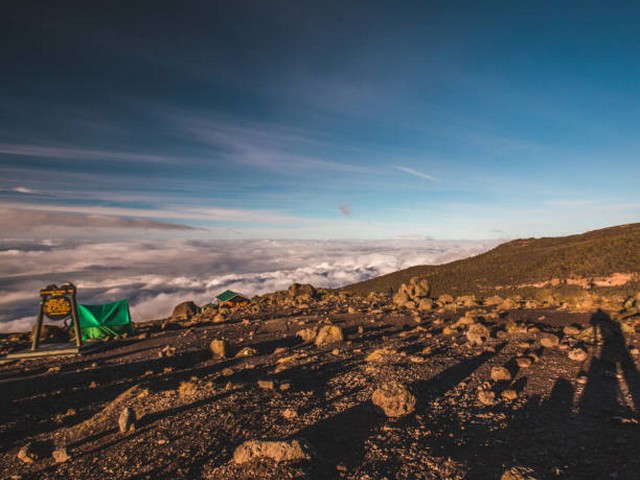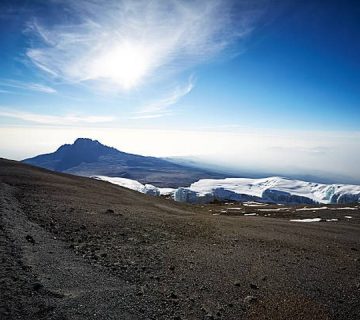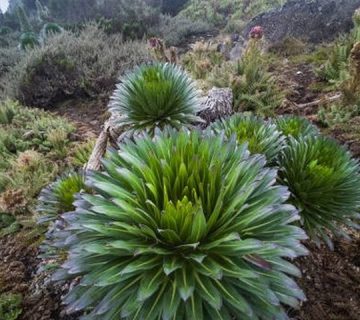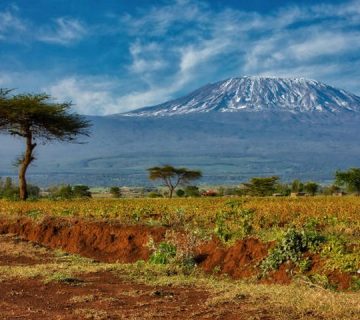How To Safely Descend Kilimanjaro After Summiting
Climbing Mount Kilimanjaro is a journey that epitomizes the spirit of adventure, challenging both the body and the soul. Standing proud as Africa's highest peak, Kilimanjaro beckons climbers from around the globe with its snowy summit and breathtaking vistas. However, reaching the peak, Uhuru Point, is only half the journey—safely descending the mountain is equally crucial and often underestimated in its difficulty. At Kilimanjaro Centre for Trekking and Ecotourism (KCTE), we understand the nuances of this majestic mountain, and we're here to guide you through a safe descent that ensures you carry only good memories home.
The Importance of a Safe Descent
Descending Kilimanjaro is not merely a retreat from the summit; it's an essential part of your trek, requiring as much preparation and care as the ascent. The descent tests your endurance and agility, often challenging tired muscles even further. Therefore, understanding the key strategies to descend safely is crucial to prevent injuries and enjoy a successful completion of your climbing adventure.
Preparing for Descent: Tips and Strategies
Prioritize Your Safety Gear
Before you even begin your descent, make sure that your gear is in order. Essential items include:
- Good Quality Trekking Poles: These will be your best friends during descent, providing balance and reducing stress on your knees.
- Proper Footwear: Ensure your boots are sturdy, with good grip and ankle support to handle the loose gravel and steep trails.
- Layered Clothing: Weather can change quickly, so layered clothing will allow you to adapt to varying conditions.
Understand the Terrain
Kilimanjaro offers different routes for both ascent and descent, each with unique challenges:
- Marangu Route: Often used for both ascent and descent, it's the only route with hut accommodations. It's considered the easiest path but requires attention to slippery sections.
- Mweka Route: Typically a descent route for those who ascend via Machame, Lemosho, and Umbwe, it is steeper and requires caution, particularly during wet conditions.
Stay Hydrated and Fueled
Just as you did on the way up, keep hydrated and eat enough. Your body needs energy to manage the demanding task of descending, and dehydration can lead to increased fatigue and impaired judgment.
Pace Yourself
Even though you might be tempted to speed up the descent, a controlled, steady pace will prevent accidents. Fast movements can lead to slips on loose rocks or soil, especially when your legs are already weary from the ascent.
Recognizing and Managing Altitude Sickness
Descending is crucial in managing altitude sickness, as it helps alleviate symptoms more rapidly than any medication. If you or your fellow trekkers experience symptoms like headaches, nausea, or dizziness, prioritize a smooth and swift descent and keep communicating with your guide.
Following the Expertise of Experienced Guides
Booking your climb with Kilimanjaro Centre for Trekking and Ecotourism (KCTE) guarantees that you will be accompanied by experienced guides who understand every nuance of the mountain. They are trained to handle emergencies and ensure a safe descent for everyone in the group. Our guides lead the way in setting an appropriate pace and offering the necessary support throughout the journey down.
The Final Stretch: Returning to Base
As you approach the final leg of your descent, it's normal to feel a mixed bag of emotions—from exhilaration to exhaustion. Remember to:
- Capture the Moments: Take photos and soak in the different perspectives and quieter beauty of the mountain.
- Stay Mentally Alert: Keep focused on the trail as fatigue and the relief of nearing the end can lead to inattention.
Summary and Call-to-Action
Descending Kilimanjaro is an intense and demanding part of the climbing experience. By preparing adequately, pacing yourself, staying hydrated, and following the guidance of seasoned professionals from KCTE, you can ensure a safe and enjoyable descent. Remember, descending safely is what allows you to fully celebrate the achievement of summiting the highest peak in Africa.
Embrace the challenge and let Kilimanjaro Centre for Trekking and Ecotourism (KCTE) guide you on this epic adventure. Whether you're looking to conquer Kilimanjaro or simply explore the beauty of Tanzania's landscapes, KCTE promises an unforgettable experience with safety and enjoyment at its core.
Frequently Asked Questions
1. What is the most common mistake climbers make on their descent?
Most climbers tend to rush their descent, which increases the risk of slips and falls. Maintaining a steady, controlled pace is key.
2. Can I descend Kilimanjaro alone?
We strongly advise against descending alone. Always trek with an experienced guide or as part of a group for safety.
3. How long does it take to descend Kilimanjaro?
The descent can take between one to three days, depending on the chosen route and individual pace.
4. What should I do if I feel very sick during the descent?
Inform your guide immediately. Rapid descent is a key treatment for severe altitude sickness. Your guide will assist you in descending quickly and safely.
Ready to start your Kilimanjaro adventure? Contact Kilimanjaro Centre for Trekking and Ecotourism (KCTE), and let's plan your safe and exhilarating climb—and descent—on this majestic mountain!




